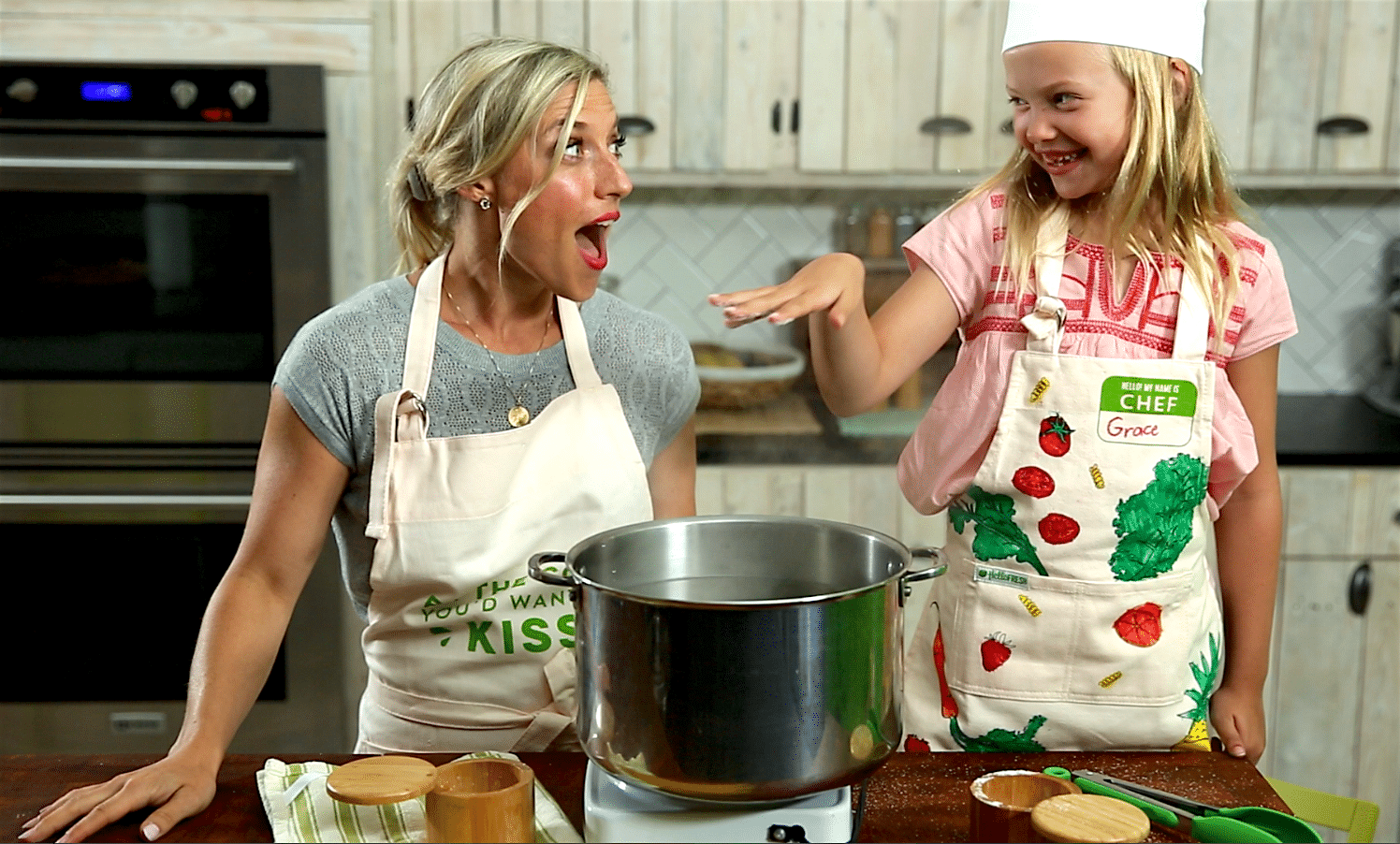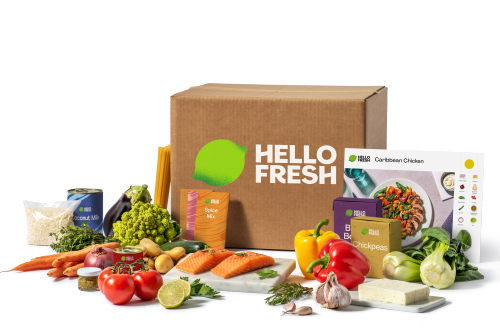Why You Should Be Taste Training With Your Picky Eaters October 4, 2017
If you have picky eaters — fear not, you can help them enjoy new foods and build their taste buds with a fun, hands-on approach called taste training.
How can it be possible that your kids loved broccoli last month and this week despise it? If you feel like mealtime with picky eaters has gone from a pleasant experience to an epic battle — this post is for you! For reassurance, this behavior is completely normal. Picky eating begins around age two when kids are starting to determine their personal likes and dislikes.
Even so, as a parent, one of the biggest impacts you can make on your kid’s eating habits is to ensure fruits and veggies are the cornerstones of their meals. These colorful, plant-based foods contain the vitamins, minerals, and nutrients that strengthen the body and help kids grow in a healthy way. However, it can be frustrating if you’re trying to help your child eat new foods and they reject your cooking.
To all parents, I say “don’t give up!” It may take 14-18 exposures to get your kids to try new foods — and that’s where taste training can help. If you struggle with picky eaters, we’ve broken down the what, when, why, and how to help make dinnertime fun again.
WHAT is taste training?
The goal of taste training is to help the little ones develop a long-lasting, positive relationship with food. It teaches food exploration and education through games and activities. Over time, the creative outlet of taste training will improve kids’ self-confidence for future food tastings — especially when they are presented with something unfamiliar.
WHEN is the best time to try it?
In the beginning, taste training will be new for both you and your child. Thus, it’s important to set aside enough time so you don’t feel rushed. Be sure to plan everything out in advance so that you have all the supplies you need on hand. You’ll also want to be in a relaxed mood so that the experience is pleasant for both of you. If you already set aside time each day for snacks, taste training is a great activity to use in its place.
WHY should you do it?
Getting your kids excited by new fruits and veggies doesn’t happen by accident, and parents need to be involved in teaching their kids. If you have picky eaters, it may be because their tastes have been trained to only recognize sweet and salty. In order to enjoy foods that are more sour and bitter (like most vegetables), kids will need to be coached to re-train their taste buds. The benefits of this are that your kids will be eating a greater variety of foods — and you can say goodbye to the dinnertime struggle.
HOW do you do it?
The key is to make activities experiential and hands-on. You want kids to feel like they are playing with their food while learning, because having fun puts a positive spin on the new foods they will be interacting with. We listed out a few of these taste training games below.
Taste Training Games
Explore the rainbow
Main message: Pay attention to how colorful fruits and veggies are. Since we eat with our eyes first, we can use color to give us a lot of information about how foods will taste. In case you missed it, we’ve done the research about the science behind why colorful food makes us happy.
What you need: Colorful fruits and veggies that are red, orange, yellow, green, blue, and purple.
What to do: Let the rainbow be your inspiration both at the store and at home.
- Make a scavenger hunt at the grocery store to find fruits and veggies in all colors of the rainbow. Let kids pick out their favorites and bring them home to try.
- Cut up the vibrant produce and let kids make a rainbow out of them on a platter to display.
- Ask kids to describe what each color tastes like.
Group similar foods together
Main message: Chances are, if your kids like one type of fruit or veggie, they’ll be most open to trying a new one that is similar.
What you need: Fruits or veggies your child already likes in addition to other fruits and veggies in the same family. Here are some suggested groupings:
- Berries (strawberries, blueberries, blackberries, raspberries)
- Citrus (lemon, orange, grapefruit, limes)
- Leafy Greens (spinach, arugula, red lettuce, romaine, chard, collards)
- Squashes (butternut, pumpkin, acorn, spaghetti)
- Tropical (pineapple, kiwi, mango)
What to do: Spend time learning about the fruits and veggies before discussing similarities and differences. This might entail a trip to the library or bookstore — even as the parent, you too may learn something new.
- Discuss where in the world the plant is from and how the plant grows (on a tree, in the ground, on a bush). You can also talk about what season the plant belongs to. Lastly, have a conversation about why it’s a healthy choice (brain food, provides energy, builds muscle, etc).
- Do a side-by-side comparison of the different varieties — what’s the same and what’s different? It’s important to use fruits and veggies that are both whole and cut up so kids can learn to recognize them in all forms.
- Ask children to pick a favorite out of the group and explain why.
Taste the five flavors
Main message: There are many different flavors (sweet, salty, sour, bitter, umami/savory). Learning a new language to describe the way foods taste will provide kids with a larger vocabulary to get over describing foods as just “yucky.”
What you need: Fruits and veggies that represent each of the five taste flavors. Our suggestions are:
- Sweet = tomatoes, red bell peppers
- Salty = bok choy, celery
- Sour = lime, lemon, kiwi
- Bitter = eggplant, leafy greens
- Umami = mushrooms, beets
What to do: Spend time talking about what the five flavors are and what types of foods match those flavors.
- Discuss the five different flavors with your child, then ask him/her to sample each of the five different foods one by one. This can be as simple as asking him/her to touch his/her tongue to the fruit or veggie.
- Ask your child to name the flavors of each food.
- Make this an ongoing lesson by reminding kids of the different flavors when they encounter them in other mealtime situations.
Learn about the five senses
Main message: Our sense of taste is related to our other senses of sight, sound, touch, and smell as well. It’s important to help picky eaters get over their food fears by teaching them to approach new foods with curiosity.
What you need: A fruit or veggie your child already likes to eat, plus one they are learning to like.
What to do: Begin with a fruit or veggie your child already likes first, and ask him/her to explore the food in the following way:
- Sight: Draw what they see
- Sound: Describe the noise of what it sounds like to eat the food (ie. crunchy, crispy, slurpy)
- Touch: Describe what the texture of the food feels like (ie. smooth, bumpy, hot, cold, sticky)
- Smell: Describe what they smell (whole and cut)
- Taste: Describe what they taste (ie. sweet, salty, sour, bitter, savory)
Repeat the questions with the fruit or veggie your child is learning to like. When you get to the question about taste, you want to encourage your child to test the fruit or veggie without necessarily eating it. This can mean licking food or even chewing it without necessarily swallowing.
Build upon favorites
Main message: Our taste preferences evolve over time — what your picky eaters dislike today, they may enjoy at a later time. Building a taste palate takes time and experimentation. For example, taste can be affected by texture, so trying different culinary techniques can have a big impact.
What you need: A fruit or veggie your child already likes plus one they are learning to like.
What to do: Introduce variations on your children’s favorite foods to evolve their taste buds.
- Variation 1: Introduce and try foods that are similar to what they already like. For example, if your kids like potato fries, introduce sweet potato, carrot, or zucchini fries instead.
- Variation 2: Go half and half. If your kids love mashed potatoes, try mixing together half potatoes and half cauliflower. If they like carrots, toss in other root veggies like parsnips.
- Variation 3: Try the same food prepared three different ways. For example, carrots can be roasted whole with herbs, mashed with butter, or sliced and sautéed with cinnamon.
A few more tips to help picky eaters
- If you have picky eaters, encourage them gently. Children shouldn’t be forced to eat, but they should be encouraged to simply taste new foods. Forcing your kids to eat something they don’t like only reinforces their dislike for that food.
- Even if your child is a picky eater, always have veggies present on the table at every meal. This allows them the choice of selecting the veggies themselves. It also helps to make sure there is always at least one fruit or veggie on the table your child does like.
- Research has shown that, when you let kids help cook, they are more likely to eat the meal they made. Safe ways to involve your kids in the kitchen include: washing the fruits and veggies, measuring, mixing, chopping softer veggies, reading cooking instructions, or even getting ingredients from the pantry and fridge.
- Lastly, remember kids watch everything their parents do. So modeling positive eating behaviors yourself is critical. If you aren’t eating (and enjoying) veggies with every meal – neither will your kids.
Don’t give up!
Bottom line, as parents, you are in charge of your children’s food education. If you eat well, chances are your children will as well. Even if developing your picky eater’s taste palate is challenging at first, offer some guidance and let your kids try again. Over time, the taste training you do with your children will teach them life-long healthy food habits so that they are more likely to eat well as adults. More importantly, make sure to have fun and don’t forget to compliment your child on a job well done.
Once you have the hang of taste training, you may want to give your kids permission to try making their own kid-friendly snacks.


















